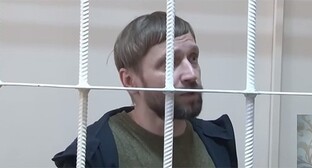
23 February 2010, 20:00
TB morbidity on the rise in Northern Caucasus
The humanitarian organization International Medical Corps (IMC) has summed up its work in Northern Caucasus in 2009. Doctors note that the region sees growth in tuberculosis (TB) and HIV morbidity, while the treatment-and-prophylactic establishments are in deficit.
The IMC states that a "TB epidemic is a fact."
"The TB growth rate in Northern Caucasus is in fact the highest in Russia. Chechnya has more both registered and newly revealed cases than any other region of Russia, except for those, where penitentiary establishments are located, in particular, some regions in Siberia," Semyon Rasin, head of the IMC Russian branch, told the "Caucasian Knot" correspondent.
According to the IMC, today Chechnya has 355 TB-infected patients per 100,000 of population. The figure is higher only in the Kemerovo Region (377 patients). Ingushetia (240) and North Ossetia (225) are close to the "leaders". For comparison: in Moscow this parameter is 77 patients.
According to doctors, today Chechnya has about 5000 registered TB patients. "Morbidity is very high, but the detection level is very low, same as professional level of specialists. There are enthusiasts who try to do at least something. There are in fact no highly-qualified experts in places - nobody wants to go to work to Chechnya," the head of the Russian branch of the IMC complains.
"Doctors in Grozny receive unprecedented salaries for the region - specialists get 30-50 thousand roubles per month (1000-1650 US dollars, - comment of the editor). It allows preserving part of specialists, but still, the deficit is felt. While shortage of TB drugs makes 90 percent," Mr Rasin continued.
He noted that recently the authorities of Chechnya have paid attention to the problem: "In Grozny, some repairs were made in the children's section of the TB clinic - by efforts of the chief physician and, surprisingly, due to personal attention of Ramzan Kadyrov, who, probably, understands the seriousness of the problem for his republic. Actually, most of the funds arrived from Kadyrov's fund."
However, as Mr Rasin continues, the main block of the Republic's TB Clinic located at 308 Ahmat Kadyrov Avenue destroyed by bombs in warfare, is not repaired until now. Its territory was mined, and nobody started de-mining yet.
"Russian troops are in charge of de-mining, but all the requests, addressed by chief physician Arbi Saidullaev to commanders of the Russian military base in Khankala, ended in formal empty answers. I think that only Mr Kadyrov's personal order can initiate the start of de-mining," Semyon Rasin concludes.
According to the IMC, Chechnya also sees a growth of AIDS morbidity.
"The population of Chechnya is practically alcohol-free, but drug using is widespread among the youth. The authorities try to enforce strong morals artificially, but it doesn't help much," the expert believes.
He also marks that "one can't say that the authorities are inefficient," and explains: "At last they closed the kiosks, where one could get a drug injection. Earlier in Grozny one could just come to a kiosk, move an arm into and get a vein injection of drug from the 'seller'. All these kiosks, AIDS spreaders, were dispersed 2-3 years ago." Nevertheless, there are still many addicts and former addicts already infected.
"At last, all over Northern Caucasus the morals forbid that a young man and a girl meet before wedding. But it does not mean that young people do not look for easy entertainments in neighbouring regions and get AIDS-infected in doubtful places there. A popular region is the Stavropol Territory," Semyon Rasin said.
"AIDS is a taboo topic; discussing it is beyond traditions. Therefore, the IMC tries to introduce at least minimum knowledge, tell at educational establishments about what AIDS is and how to get protected. Many people don't know even this," he said.
When asked about the reasons of the growth of TB patients, Semyon Rasin answered: "During the war in Chechnya there were no medicines at all. All the patients, who had been treated for tuberculosis, stopped to receive drugs and infected many people around. Secondly, TB is a social disease, the disease of poverty. The unemployment rate in Chechnya reaches 70 percent, and unemployment among the youth - 85 percent."
Author: Anastasia Kirilenko Source: CK correspondent




